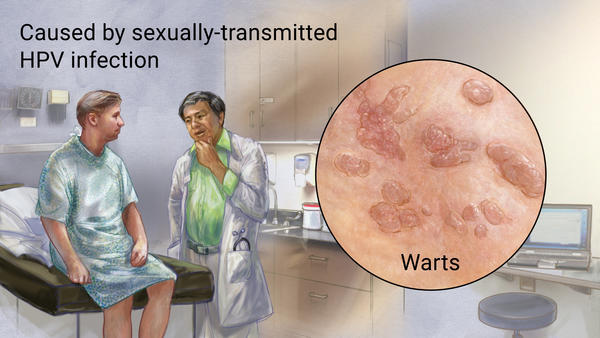
Anal warts (also called “condyloma acuminata”) are a relatively common condition that affect the area round the anus (back passage). They may also affect the skin of the genital area (genital warts). They first appear as tiny blemishes, perhaps as small as the head of a pin, and may grow larger than the size of a pea. Usually, they do not cause pain or discomfort . As a result, patients may be unaware that the warts are present. Where do these warts come from? They are thought to be caused by the human papilloma virus which is quite contagious. This means that the virus is transmitted from person to person by direct contact, including sexual activity. Do these warts always need to be removed? Yes. If they are not removed the warts generally grow larger and become more and more numerous. In addition, there is evidence that these warts can become cancerous if left untreated for a long time. What treatments are available?
If warts are small and located only on the skin around the anus, they can be treated with medications which are applied directly to the surface of the warts. This method, wh ile relatively simple in concept, must be carried out with great care and precision to prevent injury to the normal skin surrounding the warts. This method usually requires several applications performed regularly over several weeks. Another form of treatment involves surgical removal of the warts. This is usually pe rformed under a general anaesthetic. Depending on the number of warts removed the procedure can often by performed as a day case procedure. The procedure is uncomfortable and painkilling tablets will be required. A dressing will be needed and this will depend on the site and size of the wound/s. Will a single treatment cure the problem? Not in most cases. Even with surgical treatments that immediately destroy existing warts, many patients develop new warts after treatment. This occurs because viruses that cause the warts can live concealed in tissues that appear normal for up to six months or longer before another wart develops. New warts will often develop from the virus that was already present in the tissue, but these are not recurrences of the warts already treated